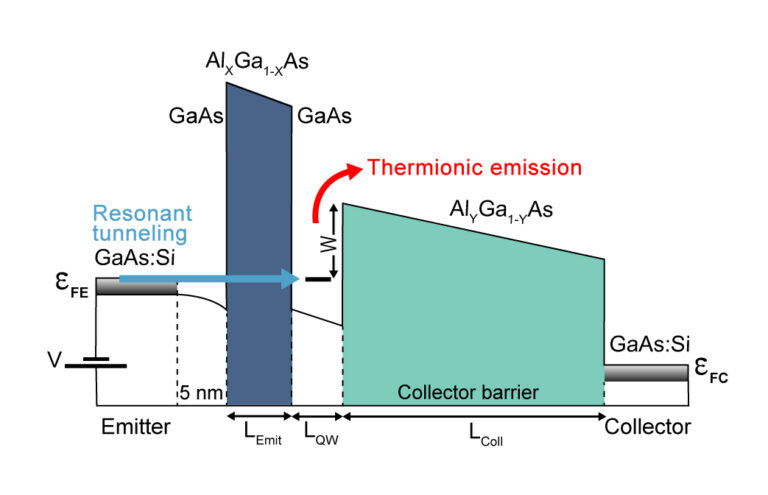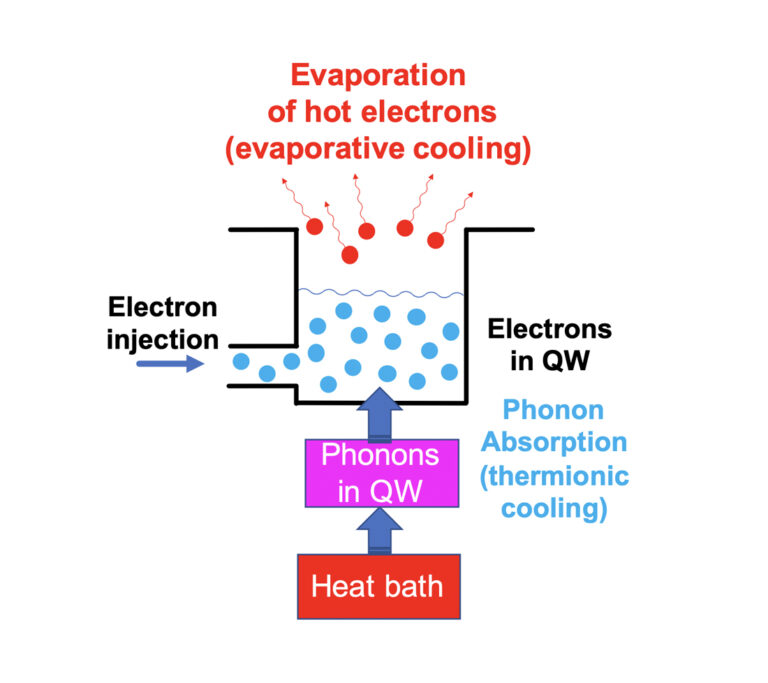Nanoscale miniaturization of semiconductor devices has led to major advances in opto/nanoelectronics. However, this device downscaling also brought technological issues. Among them, one of the most detrimental is the self-heating effect due to the thermalization of hot carriers generated by high electric fields.
The main objective of the project is to conceive and to fabricate disruptive thermionic cooling nano-devices. We will focus on multibarrier semiconductor heterostructures since members of the GELATO consortium recently demonstrated that an asymmetric double-barrier (ADB) GaAs-AlGaAs device (Fig. 1-a)) can act on the electronic and phononic bath’s refrigeration [Bes2018, Bes2020, Yan2019]. In this structure, “cold” electrons are injected into the quantum well (QW) via a resonant tunneling effect through a thin potential barrier (referred as “emitter barrier”). “Hot” electrons are extracted from the QW through a thermionic process above the thick AlGaAs alloy (referred as “collector barrier”), extracting the activation energy W from the lattice via phonon absorption. As a result, the lattice of the QW cools and the one of the collector heats. We have shown that such a low-energy-injection/high-energy-extraction device can also induce a remarkable electron cooling thanks to an evaporative effect [Yan2019]. Figure 1-b) schematically illustrates how the non-equilibrium electron and lattice systems in the QW interact with each other. The electron system is cooled through “evaporation” over the collector barrier. The colder electron system in the QW is in close contact with the warmer lattice system via electron-phonon interaction. The electron system is then warmed up by the lattice system through phonon absorption, while the lattice system in the QW is cooled down by the electron one (by “thermionic cooling”).
This task then aims at ensuring a smooth running of the project from an administrative and scientific point of view. A systematic control of the progress and the identification of solutions for any possible bottlenecks. This will be performed by Marc Bescond at IM2NP as coordinator of the project. This work package will be facilitated by the long-standing collaborations that already exist between the four partners.




